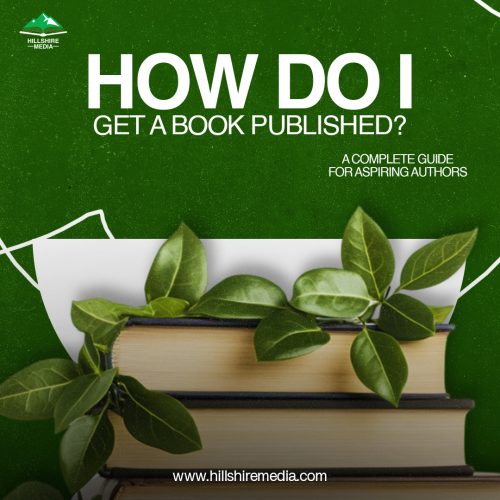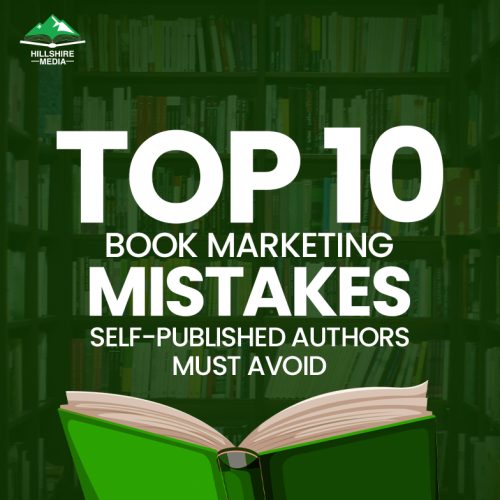In 2025, publishing your book isn’t just a dream—it’s a strategic decision. Should you self-publish or pursue a traditional deal? With more platforms, tools, and publishing models available than ever, the options can be overwhelming. Each path self publishing vs traditional publishing comes with clear advantages and drawbacks.
Whether you’re an entrepreneur writing a thought-leadership book, a coach building authority, or an author with a powerful story to tell, this guide breaks down what you need to know in 2025. We’ll explore how to publish a book, compare your publishing options for authors, and help you choose the best route based on your goals, timeline, and budget.
What Is Self-Publishing in 2025?
Self-publishing means you take full ownership of the publishing process. You are in charge of everything from editing and design to distribution and marketing. This path has become increasingly popular, especially among niche authors, entrepreneurs, and professionals who want their message out quickly and with complete control.
Key platforms dominating self-publishing in 2025:
- Amazon KDP: Still the leader in self-publishing, offering broad reach and high royalties.
- IngramSpark: Best for expanded print distribution, including bookstores and libraries.
- Draft2Digital: Offers seamless distribution to multiple eBook retailers.
- Apple Books and Kobo Writing Life: Gaining popularity for their intuitive interfaces and direct author services.
Key self-publishing benefits include:
- Speed to market: Books can be published in 2–6 weeks.
- Complete ownership: You maintain all rights and creative control.
- Flexibility: You can update content, change covers, or rebrand whenever you want.
- Direct access to global markets: Reach readers in multiple countries instantly.
Self-publishing is ideal for authors who want to publish on their timeline, maintain creative freedom, and have the budget to invest in professional services.
What Is Traditional Publishing?
Traditional publishing involves working with a publishing house, typically secured through a literary agent. This model has been the gold standard for decades, offering professional production and access to mainstream retail and media channels.
Steps in the traditional route include:
- Querying literary agents: Submitting a book proposal or manuscript and waiting for representation.
- Submission to publishers: Once represented, your agent pitches the manuscript to editors.
- Contract and production: If accepted, the book goes through a rigorous production process.
The timeline from manuscript to published book can range from 12 to 24 months, sometimes longer.
Traditional publishing is best suited for:
- Memoirs and literary fiction
- Books with broad commercial appeal
- Authors aiming for mainstream exposure, national media, and bookstore placement
While the process is slower and more competitive, it provides validation, professional editing, and an established distribution network.
Pros and Cons of Self-Publishing
Pros
- Complete Creative Control: You decide on your book’s cover, title, formatting, and content. No compromises.
- Fast Publishing: With no gatekeepers, your book can be available within weeks.
- Higher Royalties: On platforms like Amazon KDP, authors can earn 60–70% of the sale price.
- Ideal for Niche Markets: If you serve a specific audience, you can tailor your book exactly to their needs.
Cons
- All Costs Are Upfront: You’ll need to pay for editing, design, formatting, and marketing. The self-publishing cost typically ranges from $1,000–$5,000, depending on quality and services.
- No Sales Guarantee: Without a clear marketing strategy, books may go unnoticed.
- Marketing Is Your Job: From social media to email lists, your Success depends mainly on your efforts.
Pros and Cons of Traditional Publishing
Pros
- Built-In Credibility: Being published by a known house adds prestige and trust.
- Professional Quality: Your book will go through rounds of professional editing and design.
- Wide Distribution: Books are often placed in bookstores, libraries, and major online retailers.
- Marketing Support: While limited, traditional publishers often provide PR and initial marketing efforts.
Cons
- Long Wait Times: From query to bookshelf, it could take two years or more.
- Low Royalties: Authors typically earn 10–15% of the sale price.
- High Rejection Rates: Most manuscripts never make it past the query stage.
- Limited Control: Editors and marketers at the publishing house make key decisions.
Quick Comparison Table
| Feature | Self-Publishing | Traditional Publishing |
| Timeline | 2–6 weeks | 12–24 months |
| Upfront Cost | $1K–$5K | $0 |
| Royalties | 60–70% | 10–15% |
| Creative Control | Full | Very limited |
| Marketing Support | Self-managed | Publisher managed |
| Bookstore Access | Limited | Common |
2025 Trends Authors Should Know
The publishing industry continues to shift rapidly. Understanding current trends can help you make a future-proof decision.
Rise of Hybrid Publishing
Hybrid publishing is gaining traction as a flexible option. It blends the professional services of traditional publishing with the control and ownership of self-publishing. Authors pay for services but retain rights and higher royalties.
AI-Assisted Tools
New AI editing and formatting tools are making the publishing process faster and more affordable. While not a substitute for human editors, these tools assist with grammar, layout, and even cover design.
Audiobooks on the Rise
Audiobooks continue to grow in popularity. Platforms like Findaway Voices and ACX make it easier than ever to produce high-quality audio versions of your book.
Author Brand = Book Success
Publishers now evaluate an author’s platform before signing a deal. A strong social media presence, blog, or email list can be the deciding factor between rejection and a contract.
How Hillshire Media Can Help
At Hillshire Media, we understand that every author’s journey is unique. That’s why we offer flexible services tailored to your publishing goals.
For Self-Publishing Authors:
- Ghostwriting for those who need help writing
- Professional editing and formatting
- Custom cover design
- Marketing and launch strategy support
For Traditional Publishing:
- Query letter and proposal development
- Manuscript assessments
- Pitch strategy for agents and publishers
Hybrid Publishing Support:
- We partner with vetted hybrid publishers
- Help you evaluate contracts and retain rights
- Guide the process
Need help navigating the publishing maze? Hillshire Media helps authors at every stage—start your journey with a free consultation.
FAQ Section
1. What’s better? Self-publishing or traditional publishing?
It depends on your needs. If you want complete control and faster turnaround, self-publishing is often the better option. If prestige and bookstore access are essential, traditional may be a better fit.
2. Should I self-publish or traditionally publish?
Consider your goals, budget, and timeline. Self-publishing is great for entrepreneurs and niche authors. Traditional suits those looking for mainstream exposure.
3. What is the most profitable way to publish a book?
Self-publishing can be more profitable due to higher royalty rates, especially when paired with a strong author platform.
4. What is the difference between self-publishing and traditional publishing, and which one is better?
Self-publishing provides speed and control, while traditional publishing offers prestige and support. The best choice depends on your vision and publishing goals.
Final Thoughts
Choosing between self publishing and traditional publishing in 2025 is a personal decision. Each path offers different advantages depending on your goals, resources, and expectations.
If you value creative control, speed to market, and higher earnings, self-publishing might be the right fit. If you’re seeking credibility, media attention, and widespread bookstore distribution, traditional publishing may better suit your goals.
No matter the route, Hillshire Media is here to help. Our team of professionals understands the whole landscape—from self-publishing cost considerations to navigating hybrid publishing options—and we’re ready to support your journey. Ready to take the next step? Book your free consultation today.




1 Comment
[…] Self-publishing gives you complete control over the entire process, from writing and editing to distribution and sales. Platforms like Amazon KDP, IngramSpark, and Smashwords make self-publishing accessible and easy. […]